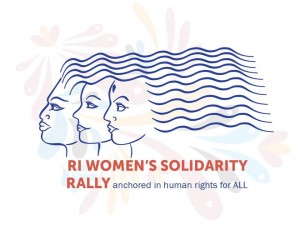 The day after the election, a post-apocalyptic silence fell upon my college campus. Hushed conversations could be heard around the dining hall with mentions of Florida and Ohio and fear. My only class of the day was cut short. That evening, I sought refuge in the feminist association’s weekly meeting. I wrote. I found comfort in the words of my peers, in knowing that I wasn’t alone and in the promise that there would be hell to raise.
The day after the election, a post-apocalyptic silence fell upon my college campus. Hushed conversations could be heard around the dining hall with mentions of Florida and Ohio and fear. My only class of the day was cut short. That evening, I sought refuge in the feminist association’s weekly meeting. I wrote. I found comfort in the words of my peers, in knowing that I wasn’t alone and in the promise that there would be hell to raise.
Fast forward to the day after the inauguration, during which hell was raised. About three million people participated in 673 demonstrations on all seven continents (yes, including Antarctica). Seas of pink pussy hats and clever signs took to the streets in cities from Washington, DC to Sydney. Among them was the Women’s Solidarity Rally in Providence, which saw a crowd of 7,000 that filled up the south lawn of the state house. I was fortunate enough to be among those gathered.
If there’s one thing I have learned since I first took up the feminist banner myself, it is that a united group of angry feminists cannot be silenced. Unfortunately, uniting feminists is easier said than done, for as many different kinds of women there are, there are different kinds of feminists. The Women’s March on Washington has fallen under fire multiple times since its inception as the Million Women March (a name that had to be changed as it was co-opted from a 1997 march organized by African-American women towards their own self-determination; the new name was a nod to the march led by Martin Luther King Jr. with the blessing of his daughter) for not being inclusive enough. While efforts were made to make the event more inclusive toward women of color, women with disabilities and other groups, some were still left out. Nonetheless, that the criticisms were even heard was a step in the right direction.
Bearing this background in mind, the Women’s Rally in Providence managed to include a relatively diverse array of speakers. I was most impressed by the younger speakers to take the podium, two high school students engaged in activism in their communities. It is young women like them who I always think of when I hear someone claim that millennials are lazy or apathetic. As far as I can tell, the millennials I know are hard-working, engaged in their communities and driven to make the world a better place. I have hope for the future because of all of the young people who attended rallies and marches like this one (I acknowledge in saying this that I may be biased because I am also technically classified as a “young people,” but what can I say? I am inspired by my peers).
I don’t like crowds. Being in the middle of a mass of people all shouting sounds like my worst nightmare. I wanted to attend the rally because I wanted to partake in the resistance, and silently raging at home alone can only accomplish so much. Like anyone, I wanted to be a part of history. I was willing to go where no introvert had gone before. And it’s funny, but it wasn’t even a little bit painful. A crowd united in purpose — united for a better world, for love trumping hate — is not anxiety-provoking but awe-inspiring. Shouting is so much less intimidating when it is a rallying cry of “rise up.” Any shred of doubt or fear falls away. We are instead left with hope.
The day after the election, I felt the way many did: despondent, afraid, devastated, hopeless. It was knowing that I was not alone in these feelings that made me realize there is always hope. As long as there are people willing to fight for what is right, there is always hope. As novelist John Green once said, “The world may be broken, but hope is not crazy.”
The Women’s March is not just a moment but the start of a movement. We will continue to resist and fight back against threats to anyone’s rights. We will not go away, and we will not be silenced.
Still we rise.

